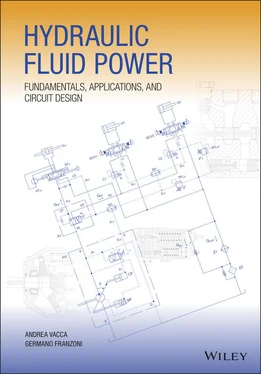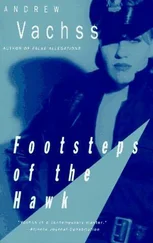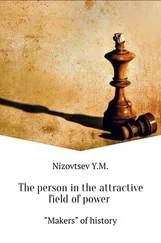2 Chapter 5Table 5.1 Lumped parameter elements for a hydraulic line and electric equival...Table 5.2 Hydraulic impedance and transfer function representation of a hydra...
3 Chapter 6Table 6.1 Features and main operating parameters of the most common positive ...
4 Chapter 8Table 8.1 Main differences between conventional proportional DCV and servoval...
5 Chapter 25Table 25.1 Non‐dimensional values for the rolling resistance factor.
1 Chapter 1 Figure 1.1 The axial piston pump sketched by A. Ramelli [1]. Figure 1.2 The Williams–Janney transmission was based on axial piston design... Figure 1.3 A collage of pictures from historical moments of the fluid power ... Figure 1.4 Hydraulic system of a jet blast deflector. Figure 1.5 Hydraulic circuit with pilot‐controlled sequence valve. Figure 1.6 Hydraulic circuit for moving an actuator. Figure 1.7 Meaning of different types of lines in hydraulic circuits. Figure 1.8 Common symbols for prime movers and mechanical rotary transmissio... Figure 1.9 Common symbols utilized for prime movers and energy conversion un... Figure 1.10 Common symbols utilized for directional and pressure control ele... Figure 1.11 Symbols used for accessory elements and sensors.
2 Chapter 2 Figure 2.1 Example of simple hydraulic circuit. The hydraulic fluid can be i... Figure 2.2 Classification of mineral oils according to ISO 6473‐4. Figure 2.3 Classification of fire‐resistant fluids according to ISO 7745.... Figure 2.4 Density variation with pressure for three oils (parameters listed... Figure 2.5 Density variation with temperature for three oils (parameters lis... Figure 2.6 Shear stress in a fluid: initial rest condition (a) and (b) after... Figure 2.7 Viscosity of hydraulic fluids as a function of the temperature. Figure 2.8 Qualitative representation of the viscosity index (VI). Figure 2.9 Viscosity as a function of pressure. Figure 2.10 Typical causes of entrained air within the hydraulic fluid: (a) ... Figure 2.11 Equilibrium states for a liquid considering gas solubility. Figure 2.12 Compression of a mixture of liquid and undissolved gas. Figure 2.13 Graphical representation of the dissolved and undissolved air in... Figure 2.14 Solid particles entering the clearances of a hydraulic control v... Figure 2.15 Suction filtration circuit. Figure 2.16 High pressure filtration circuit: (a) application to the whole c... Figure 2.17 Return filtration circuit. Figure 2.18 Offline filtration circuit. Figure 2.19 Typical design of a hydraulic reservoir.
3 Chapter 3 Figure 3.1 Basic hydraulic machine. Figure 3.2 Fluid pressure increases with depth. Figure 3.3 Elevation difference in the hydraulic circuit of a mobile applica... Figure 3.4 Flow through a pipe: velocity vector and surface area vector. (a)... Figure 3.5 Actual velocity profile (laminar and turbulent flow) and uniform ... Figure 3.6 Control volume (CV) and bounding control surface (CS). Figure 3.7 Conservation of mass in a hydraulic junction. Figure 3.8 Representation of a hydraulic cylinder during the extension. Figure 3.9 Venturi tube and representation of streamlines. Figure 3.10 Laminar (a) and turbulent (b) velocity profiles in a pipe, with ... Figure 3.11 Example of analysis of major and minor losses in a pipe flow. Figure 3.12 Moody's diagram for the calculation of the friction factor. Figure 3.13 Example of separation region at a flow entrance. Figure 3.14 Resistance across a hydraulic check valve. Figure 3.15 Linear approximation for the hydraulic resistance in turbulent f... Figure 3.16 Graphical representation of flow law (a) and pressure law (b). Figure 3.17 Reference geometry for the analysis of flow forces.
4 Chapter 4 Figure 4.1 Flow through a sharp orifice. Figure 4.2 Orifice area for a poppet needle valve. (a) Entire popper valve. ... Figure 4.3 Theoretical and experimental trends of the flow coefficient vs. t... Figure 4.4 Orifice equation plotted in a (p, Q) layer for different area ope... Figure 4.5 Hydraulic symbol of two valves and equivalent orifice networks. Figure 4.6 Orifice in parallel and in series.
5 Chapter 5 Figure 5.1 Control volume (CV) and bounding control surface (CS).Figure 5.2 Constant section pipe with uniform velocity profile.Figure 5.3 An orifice connected to upstream and downstream lines is a pure r...Figure 5.4 Impedance model for a hydraulic line. (a) Real system, (b) Lumped...Figure 5.5 Lumped distributive model for a hydraulic line. (a) Real system, ...Figure 5.6 Conceptual representation of using of a hydraulic accumulator for...
6 Chapter 6Figure 6.1 Power flow in a hydraulic system.Figure 6.2 Representation of power flow and input‐output energy parameters i...Figure 6.3 Plunger pump with port selection spool.Figure 6.4 Commutation points for a plunger pump, starting from the bottom l...Figure 6.5 Ideal working cycle of the plunger pump.Figure 6.6 Wobble plate pump (a) and ISO pump symbol (b).Figure 6.7 Displacement chamber volume as a function of the shaft angular po...Figure 6.8 Procedure for assembling a pump symbol. The factors to be conside...Figure 6.9 ISO symbols of the most common pumps.Figure 6.10 Symbol breakdown for a hydraulic motor (top) and ISO symbols of ...Figure 6.11 Displacing cycle of an ideal hydrostatic machine with compressib...Figure 6.12 Examples of external leakage and internal leakage.Figure 6.13 Effect of turbulent losses: (a) pump; (b) motor.Figure 6.14 Incomplete filling.Figure 6.15 Trends for the volumetric losses.Figure 6.16 Trends for the hydraulic-mechanical losses.Figure 6.17 Qualitative representation of volumetric, hydraulic-mechanical, ...Figure 6.18 Qualitative representation of volumetric, hydraulic-mechanical, ...Figure 6.19 Swashplate‐type axial piston machine vertical cross‐section.Figure 6.20 Swashplate‐type axial piston machine horizontal cross‐section.Figure 6.21 Valve plate geometry example for a bidirectional motor.Figure 6.22 Pressures in a swashplate axial piston machine.Figure 6.23 Three lubricating interfaces in swashplate‐type axial piston mac...Figure 6.24 Bent axis‐type axial piston machine.Figure 6.25 Radial piston machine.Figure 6.26 External gear machine: (a) view of the lateral bushing surface f...Figure 6.27 External gear machine lateral bushing.Figure 6.28 Internal gear machine.Figure 6.29 Gerotor cross‐section.Figure 6.30 Vane pump cross‐section.Figure 6.31 Vane pump port flow.Figure 6.32 Single stator vane machine.
7 Chapter 7Figure 7.1 Linear actuator architecture and ISO symbol.Figure 7.2 ISO symbols of various linear actuators.Figure 7.3 Cylinder areas, forces, and pressure. The sign convention for the...Figure 7.4 Definition of resistive and overrunning loads for a hydraulic cyl...Figure 7.5 Schematic for the definition of volumetric efficiency for a hydra...Figure 6 Conceptual cross‐section of a two‐stage single acting telescopic cy...Figure 7 Conceptual cross‐section of a two‐stage double acting telescopic cy...
8 Chapter 8Figure 8.1 Generic parameters of springs used in hydraulic components and, i...Figure 8.2 Possible symbols for a check valve.Figure 8.3 Architectures for a check valve. (a) Poppet‐seat type. (b) Ball‐s...Figure 8.4 Flow–pressure characteristic of a check valve.Figure 8.5 Pilot‐to‐open (a) and pilot‐to‐close (b) check valves.Figure 8.6 Symbol and cross‐section of a shuttle valve. Cross section (a) an...Figure 8.7 ISO symbol and its breakdown for a direct acting pressure relief ...Figure 8.8 Direct acting pressure relief valve, poppet type. (a) Cross secti...Figure 8.9 Steady‐state characteristic of a direct acting pressure relief va...Figure 8.10 Pilot operated pressure relief valve.Figure 8.11 Detailed ISO representation of a pilot operated relief valve (a)...Figure 8.12 Steady‐state characteristic of pressure relief valves: qualitati...Figure 8.13 Direct acting pressure reducing and relieving valve: cross secti...Figure 8.14 Ideal (a) and real operating characteristics (b) of a pressure r...Figure 8.15 Pilot operated pressure reducing valve: cross sectional view (a)...Figure 8.16 ISO representation of a two‐way flow control valve: simplified s...Figure 8.17 Cross‐section of a post‐compensated two‐way flow control.Figure 8.18 Detailed ISO symbol for the valve of Figure 8.17.Figure 8.19 Characteristic of a two‐way pressure compensated valve.Figure 8.20 Examples of variable setting two‐way flow control valves.Figure 8.21 Circuit with a two‐way flow control supplied by a fixed displace...Figure 8.22 Detailed (a) and simplified (b) ISO representations of a three‐w...Figure 8.23 Three‐way flow control valve: cross‐section and equivalent symbo...Figure 8.24 Different solutions for adjustable three‐way flow control valves...Figure 8.25 Circuit with a two‐way flow control supplied by a fixed displace...Figure 8.26 Circuit where the three‐way flow control is also used for accomp...Figure 8.27 Three‐way priority flow control valve.Figure 8.28 ISO symbols used for (a) on/off, (b) discrete position, and (c) ...Figure 8.29 Example of a 4/3 spool directional control valve (a): simplified...Figure 8.30 Orifice connections implemented through spool and bore lands.Figure 8.31 Example of opening area vs. spool position for the meter‐in and ...Figure 8.32 Spool with metering notches to obtain fine regulations: cross se...Figure 8.33 Example of possible neutral configurations of a 3/4 DCV: (a) mot...Figure 8.34 Spool actuation principle for a hydraulic pilot operated 4/3 DCV...Figure 8.35 Solenoid basic architecture and operating principle and ISO symb...Figure 8.36 ISO symbols of a DCV with (a) manual and (b) direct solenoid act...Figure 8.37 ISO schematic of a DCV with hydraulic remote pilot actuation con...Figure 8.38 (a) ISO expanded circuit representing an electro‐hydraulic actua...Figure 8.39 Cross‐section and equivalent schematic of a DCV with manual and ...Figure 8.40 Architecture of a servovalve (flapper/nozzle type).Figure 8.41 Spool lapping around the center positions for servovalves. (a) C...Figure 8.42 Opening area (a) and Flow characteristic (b) of a servovalve as...Figure 8.43 Control mechanism of the servovalve (flapper‐nozzle type): (a) i...Figure 8.44 Use of a servovalve for controlling and actuator. Depending on t...Figure 8.45 Parametrization of the servovalve: (a) cross sectional view; (b)...Figure 8.46 Characteristic curve of a servovalve.Figure 8.47 Simplified schematic for understanding the servovalve characteri...Figure 8.48 Characteristic curve of a servovalve (alternative).Figure 8.49 Characteristic curve of a servovalve with positive lapping (clos...Figure 8.50 Characteristic curve of a servovalve with negative lapping (open...Figure 8.51 Valve open at an intermediate position.Figure 8.52 Linearity error in a spool valve.
Читать дальше












